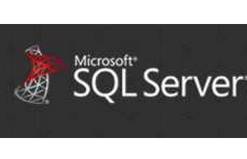| Looking Forward to SQL Server 2014 |
| Written by Ian Stirk | |||
| Thursday, 12 September 2013 | |||
|
September 2013 SQL Server Pro Magazine is already addressing the question, What’s in the next version of SQL Server? It also looks at questions regarding SQL Server 2014’s In-Memory OLTP Engine.
In this overview of the online subscription-based monthly magazine, the items in bold below correspond to the name of the article in the current issue. The SQL Server 2014 Community Technology Preview 1 has been available since June but if you've not already looked at it Microsoft's Eron Kelly Discusses SQL Server 2014 with Michel Otey. The highlights include:
This was my favourite article, with some very useful links. The promise of improved performance for very little cost is just too enticing.
There’s an interesting FAQs About SQL Server 2014’s In-Memory OLTP Engine. Formerly code-named Hekaton, this is the most prominent aspect of the forthcoming SQL Server 2014 release. The article discusses the immediate questions you’re sure to want the answer to, including where to find more information, expected performance gains (5x to 20x are likely) and how it works (tables are moved into memory).
There’s a gentle step-by-step walkthrough Exploring Visual Studio 2010’s Database Tools. This article discusses creating database projects, stored procedures, and running SQL queries. Perhaps most interesting is the ability to compare databases for differences in schemas and data – perhaps these can be used in place of the expensive third party equivalents!
More InformationHekaton: SQL Server’s Memory - Optimized OLTP Engine Related ArticlesHekaton Adds In-Memory Transaction Support To SQL SQL Server - Mostly Out Of Date SQL Server Pro's Tips For Performance Tuning and T-SQL (August issue) PowerShell The SQL Server Way (July issue) T-SQL Join Types In SQL Server Pro's June Issue Inside SQL Server Pro Magazine May 2013 AlwaysOn Availability in SQL Server Pro Magazine (April issue) SQL Server In The Era Of Big Data (March issue) Improve Performance with SQL Server Pro Magazine February 2013 SQL Server Pro Magazine January 2013 Inside SQL Server Pro December 2012
To be informed about new articles on I Programmer, install the I Programmer Toolbar, subscribe to the RSS feed, follow us on, Twitter, Facebook, Google+ or Linkedin, or sign up for our weekly newsletter.
Comments
or email your comment to: comments@i-programmer.info
|
|||
| Last Updated ( Thursday, 12 September 2013 ) |


